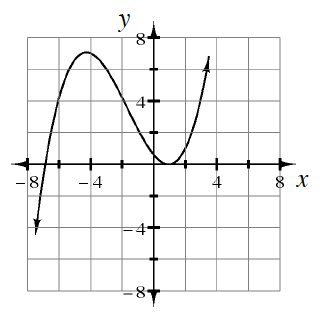
Home > INT3S > Chapter 8 > Lesson 8.3.1 > Problem 8-102
8-102.
Cada uno de los siguientes gráficos representa una función polinómica. Indica el grado mínimo de cada función y el número de raíces reales y complejas que tiene.
Ejemplo: El gráfico de
Tiene tres raíces reales y ninguna raíz compleja.


Grado
Hay dos raíces reales distintas, de las cuales, una está repetida.

Grado
Hay dos raíces reales y dos raíces complejas.

